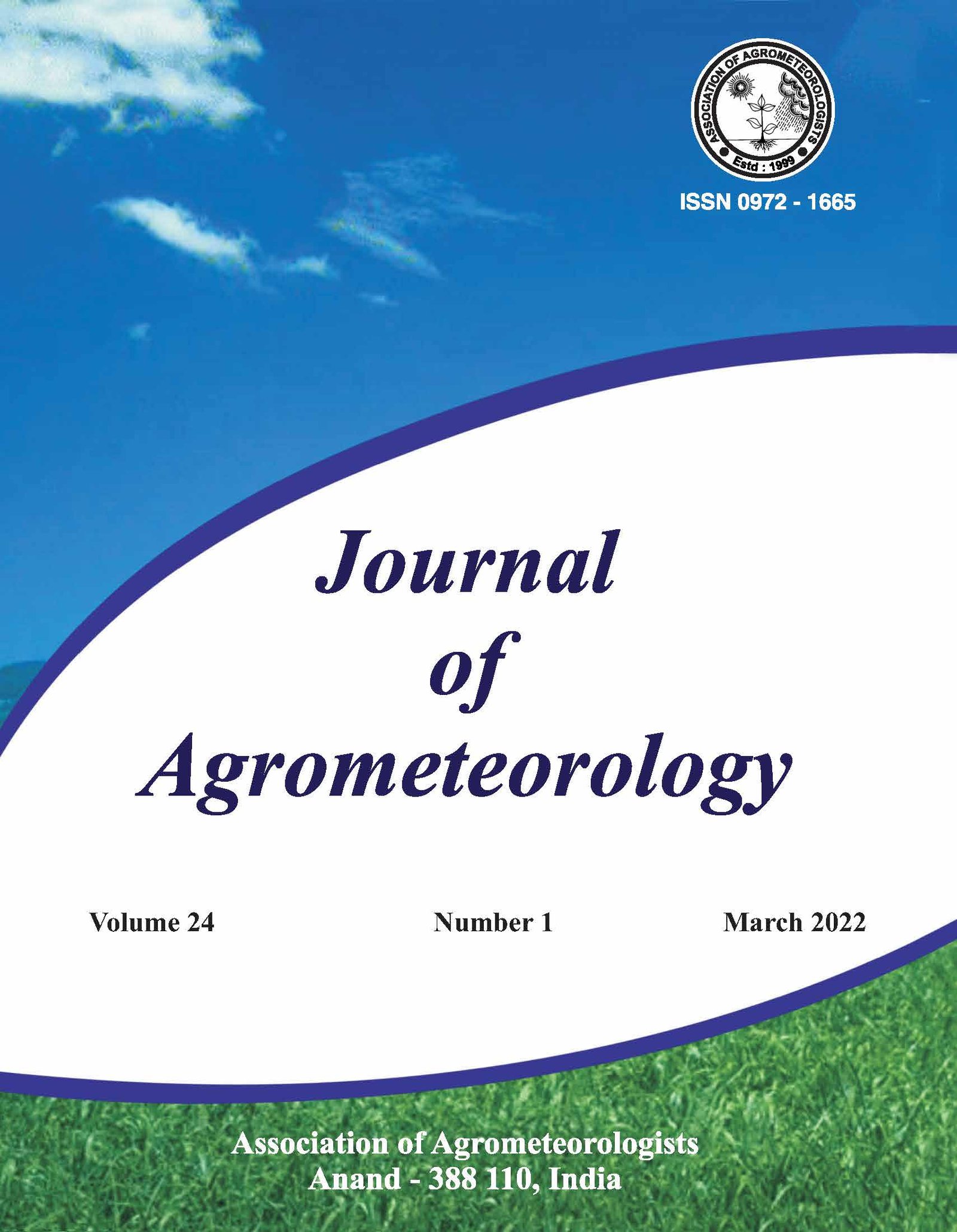Seasonal climate forecasts (SCFs) based risk management strategies: A case study of rainfed rice cultivation in India
DOI:
https://doi.org/10.54386/jam.v24i1.775Keywords:
FResampler1, climate change, DSSAT, yield, rice, Sitamarhi.Abstract
Seasonal climate forecasts (SCFs) have gained popularity in agriculture for climate risk management studies. The available forms of SCFs are not conducive to decision making because of a mismatch in scales over space and time. In this study, available SCFs were disaggregated using the FResampler1 technique to simulate rice yield (cultivar PR 114) under different nitrogen levels and planting dates using DSSAT (Decision Support System for Agrotechnology Transfer) for Sitamarhi district, Bihar, India. Results showed that the late planting of rice predicted the highest yield (3800 kg ha-1) with high variability under SCF (wet) and 200 kg ha-1 application of nitrogen fertilizer. Similarly, for SCF (dry), the late planting of rice simulated high yield (3100 kg ha-1) attributes with 200 kg ha-1 of nitrogen fertilizer. However, rice yield under climatology (3450 kg ha-1) was more than SCF (dry) (3100 kg ha-1). Planting of rice on 15th June 2019 under the SCF (normal) predicted low uncertainty with high mean yields as compared to the mid (05th July 2019), and late (25th July 2019) planting. The present study showed that by applying SCF, we can have a better understanding on “relative” changes in yield attributes with fertilizer doses and planting dates, which may be adopted by the climate adviser to offset the climate risk without compromising productivity.
Downloads
Published
How to Cite
Issue
Section
License
Copyright (c) 2022 N.L. KUSHWAHA, JITENDRA RAJPUT, PARESH B. SHIRSATH , D.R. SENA, INDRA MANI

This work is licensed under a Creative Commons Attribution 4.0 International License.
This is a human-readable summary of (and not a substitute for) the license. Disclaimer.
You are free to:
Share — copy and redistribute the material in any medium or format
Adapt — remix, transform, and build upon the material
The licensor cannot revoke these freedoms as long as you follow the license terms.
Under the following terms:
Attribution — You must give appropriate credit, provide a link to the license, and indicate if changes were made. You may do so in any reasonable manner, but not in any way that suggests the licensor endorses you or your use.
NonCommercial — You may not use the material for commercial purposes.
ShareAlike — If you remix, transform, or build upon the material, you must distribute your contributions under the same license as the original.
No additional restrictions — You may not apply legal terms or technological measures that legally restrict others from doing anything the license permits.
Notices:
You do not have to comply with the license for elements of the material in the public domain or where your use is permitted by an applicable exception or limitation.
No warranties are given. The license may not give you all of the permissions necessary for your intended use. For example, other rights such as publicity, privacy, or moral rights may limit how you use the material.





